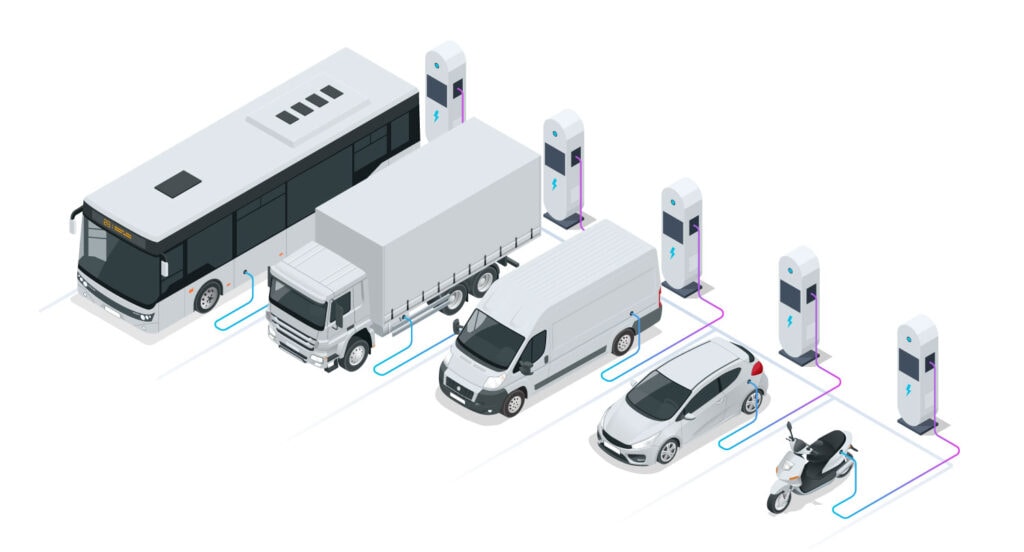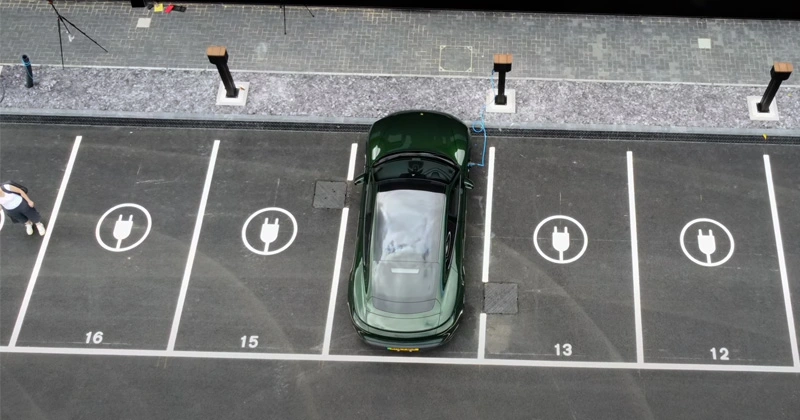Electric Vehicle Fleet Charging Infrastructure: Strategies for Efficient Implementation
Building a robust and reliable electric vehicle (EV) fleet charging infrastructure is crucial for businesses seeking to improve operations, reduce costs, and meet sustainability goals. A well-designed charging network ensures that vehicles are always oyo88 ready to go, helping to avoid operational setbacks while supporting long-term cost-savings and growth. In this guide, we’ll explore what is involved in building an EV fleet charging infrastructure, how to implement it effectively, and the advantages it can bring to your organization.
What Is EV Fleet Charging Infrastructure?
EV fleet charging infrastructure is more than just installing chargers—it’s about creating a system that keeps your fleet powered and your business running smoothly, while lowering costs and maintaining an efficiently powered workforce. This infrastructure combines charging stations, energy management systems, and fleet management software to ensure vehicles are charged on time without placing unnecessary strain on your operations or the power grid.

- Charging Stations: These power up your vehicles. Level 2 chargers are perfect for overnight charging, while DC fast chargers provide a quicker solution for vehicles that need to get back on the road quickly.
- Energy Management Systems: These help optimize power usage, which helps prevent high-demand energy surges and reduce operational costs.
- Fleet Management Software: Offers real-time monitoring, helping you track charging status, manage schedules, and oversee energy consumption.
When these components work together, they create a flexible and scalable infrastructure that can meet your current needs while enabling you to predict your future needs and accommodate long-term growth.
Techniques for Implementing EV Fleet Charging
Setting up an EV fleet charging network requires thoughtful planning. The first step is to analyze your fleet’s size, daily driving patterns, and energy requirements. Understanding these details will help you determine how many chargers you need and what types will be most effective for your operation.
For most fleets, a combination of Level 2 and DC fast chargers strikes the right balance between cost and efficiency. Level 2 chargers are ideal for vehicles that remain parked overnight or for extended periods, while DC fast chargers allow for quick top-ups, keeping vehicles moving on schedule.
Planning the physical layout of your charging stations is equally important. Optimize your space to ensure vehicles can easily access the chargers without creating bottlenecks. Thoughtful placement reduces congestion and minimizes downtime, improving overall efficiency. Make sure to install your chargers using smart wiring configurations to lower upfront costs and allow room for growth.
Another essential strategy is to use smart charging solutions. These systems allow you to schedule charging during off-peak hours when electricity is cheaper, and taking driver behavior patterns into account, helping you save on energy costs while ensuring vehicles are fully charged and ready when needed.
Advantages of EV Fleet Charging Infrastructure
Investing in EV fleet charging infrastructure provides significant financial, operational, and environmental value. One of the most immediate advantages is cost savings. Electric vehicles are much cheaper to maintain than traditional combustion engine vehicles, with fewer moving parts and lower fuel costs. Over time, these savings can significantly impact your bottom line.
Operational efficiency is another key benefit. With a properly managed charging network, you can avoid unexpected downtime and keep your fleet running on time. Smart charging schedules and real-time monitoring ensure that vehicles are always ready when needed, helping you maintain seamless operations.
There’s also a clear environmental advantage. Reducing emissions by transitioning to an electric fleet aligns with corporate sustainability goals, helping you meet regulatory requirements while improving your brand’s image. Companies that prioritize sustainability often gain a competitive edge, as customers and partners increasingly value environmentally responsible practices.
How to Implement an EV Charging Network
Implementing an EV charging network doesn’t have to be complicated if you follow a structured and sophisticated approach. Start by conducting a site assessment to identify the most suitable locations for your charging stations. Consider factors such as available power supply, parking layout, and vehicle access.
Once you’ve selected your sites, involve key stakeholders. Collaborate with utility providers, equipment vendors, and your internal teams to ensure you have the right resources and expertise. Developing a detailed plan with timelines, budgets, and responsibilities will help keep your project on track and prevent costly mistakes.
After installation, continuous monitoring is critical. Regularly reviewing your energy usage and system performance will allow you to make adjustments as needed and optimize your network over time. Some systems provide triggers and predictive analytics to help plan going forward. This ongoing assessment ensures you get the most out of your investment while staying prepared for future changes.
Integrating Renewable Energy
For businesses looking to take sustainability to the next level, integrating renewable energy sources like solar panels into your charging network can offer significant advantages. Solar power smartly combined with battery storage can reduce dependence on the grid, lower energy costs, and increase the resilience of your operations. Generating clean energy on-site not only aligns with sustainability initiatives but also protects you from fluctuating energy prices in the long run.
FAQs
To determine the best chargers, assess your fleet’s driving patterns and charging needs. Level 2 chargers are ideal for overnight charging or vehicles with long idle periods, while DC fast chargers are better for quick top-ups during the day when time is limited. A mix of both often provides the most flexibility.
Consider proximity to power sources, ease of access for vehicles, and how the charging station layout can minimize congestion. Future expansion potential is also important, as your fleet size and charging needs may grow over time.
Schedule charging during off-peak hours when electricity rates are lower, and taking your driver behavior patterns into consideration. Smart charging systems can automate this process, optimizing energy consumption and helping you avoid expensive peak demand periods.
Maintenance typically includes regular inspections, software updates, and cleaning the connectors to ensure efficient performance. It’s also essential to monitor the equipment for signs of wear and schedule preventive maintenance to avoid unexpected downtime.
Integrating renewable energy, such as solar power, reduces dependence on the grid and significantly lowers operational costs. It also enhances sustainability by providing clean, renewable electricity, helping you meet environmental goals while improving long-term energy resilience.
Meet Wevo Energy Solutions
Wevo Energy provides customized software solutions for businesses transitioning to electric fleets. From initial planning to full implementation, Wevo Energy helps companies build efficient and scalable charging networks. With a focus on reliability and sustainability, Wevo ensures a seamless transition to electric mobility while reducing operational costs and improving energy efficiency.
Summary
A well-planned EV fleet charging infrastructure is essential for improving operational efficiency, reducing costs, and meeting sustainability targets. By understanding its components, adopting smart strategies, and continuously monitoring performance, businesses can confidently make the switch to electric vehicles. Strategic planning and the right technology partners will help you get the most out of your investment and future-proof your operations.


